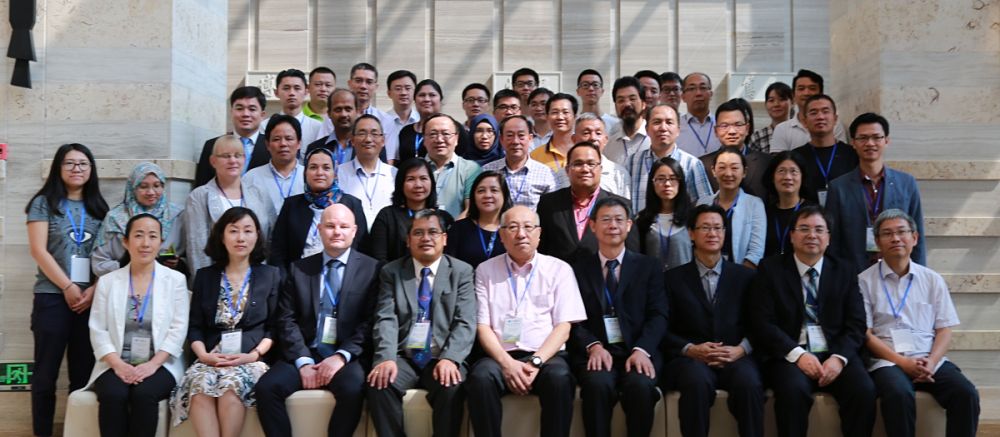Emergency Regional Consultation for Prevention and Management of Tilapia Lake Virus in the Asia-Pacific
7 October 2017 | 3233 views | China, Freshwater finfish, Health and Biosecurity, India, Indonesia, Malaysia, Myanmar, Philippines, Thailand, Vietnam

Since 2009, tilapia aquaculture has been threatened by mass die-offs in Israel and Ecuador, which have been caused by a novel Orthomyxo-like (RNA) virus named Tilapia lake virus (TiLV). This has been reported as a newly emerging virus that causes syncytial hepatitis of tilapia (SHT). As of 2016, countries affected by this emerging disease included Israel, Ecuador, Colombia and Egypt. In 2017, Thailand and Taiwan Province of China confirmed the presence of the virus among farmed tilapia, which has caused mass mortalities since 2015. This is the first report of the disease in Asia-Pacific region. NACA released a Disease Advisory as part of the awareness programme in the region. The advisory was widely disseminated to all NACA member governments, partner institutes and other interested parties in the region and beyond.
As tilapia is a highly important aquaculture species in the region, it is highly important to contain the disease and prevent its spread to other major tilapia-producing countries such as China, the Philippines, Indonesia, Lao PDR and Bangladesh. Tilapia-producing countries in the region should be able to harmonise efforts in preventing the entry of the pathogen through improved quarantine and biosecurity measures. As such, the Emergency Regional Consultation was held to discuss and plan actions on the overall prevention and management of this disease. The consultation focused on the following:
- Implementation of proper quarantine and biosecurity measures, as well as responsible movement of live tilapias within the country and across the region.
- Strengthening of diagnostic capacities as well as active surveillance for the disease (to detect presence or absence of the virus).
- Formulation of recommendations on the sanitary measures for disease prevention
- Emergency preparedness for countries not yet affected by the disease highly considering the capacity of each country. As tilapia is a common food for many people in the region, especially among rural communities, emergency preparedness will make a big impact in the management of this emerging threat for tilapia aquaculture.
The Consultation was organised by NACA in collaboration with the National Fisheries Technology Extension Center (NFTEC), Ministry of Agriculture (MOA) and Sun Yat-Sen University, People’s Republic of China. It was held at Sun Yat-Sen Kaifeng Hotel, Guangzhou, China on 27-28 September 2017, and was attended by 45 foreign and local participants. The following topics were presented and discussed:
- Tilapia aquaculture in the Asia-Pacific Region: Status and Trends (Dr Derun Yuan, NACA).
- Important diseases of cultured tilapia (Prof. Jianguo He, Sun Yat-Sen University).
- The Role of Trade in Spread of Transboundary Aquatic Animal Diseases (Dr Eduardo Leaño, NACA).
- Overview of TiLV (Dr Mona Jansen; Norwegian Veterinary Institute).
- Update on TiLV research in Thailand and potential strategies for control (Dr Ha Dong; KMUTT, Thailand).
- Virus characterisation, clinical presentation and pathology of TiLV (Dr Win Surachetpong, KU, Thailand).
- Import Risk Assessment: Role in prevention of transboundary aquatic animal diseases (Dr Hong Liu; AQSIQ, China) .
- Biosecurity: Role in aquatic animal disease prevention and control (Dr Jie Huang; YSFRI, China).
Country representatives then presented “Tilapia Health Management with Focus on Status of and National Action Plan on TiLV”. Countries represented were China (Dr Li Qing), Egypt (Dr Shimaa Elsayed Mohamed Ali), India (Dr Pravata Pradhan), Indonesia (Ms. Ratna Amalia Kurniasih), Malaysia (Dr Azila Binti Abdullah), Myanmar (Dr Kay Lwin Tun), Philippines (Dr Sonia Somga), Thailand (Ms. Jaree Polchana) and Vietnam (Dr Pham Hong Quan). A panel discussion was held and discussed the following issues:
- Formulation of regional plan for prevention and control of TiLV.
- Research gaps and priorities.
- Surveillance and reporting.
- Listing in OIE.
- Way forward.
Panelists include representatives from regional and international organisations as well as key institutes in China including: Dr Hong Liu (AQSIQ), Prof. Jianguo He (SYSU), Dr Yan Liang (NFTEC), Prof. Hong Yang (FFRC), Dr Stian Johnsen (OIE), Dr Shimaa Ali (WorldFish), Dr Rolando Pakingking, Jr. (SEAFDEC AQD), and Dr Eduardo Leaño (NACA). The proceedings of the consultation are still under preparation and will be available on the NACA website once published.
Creative Commons Attribution.